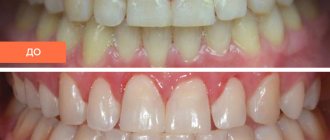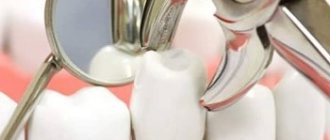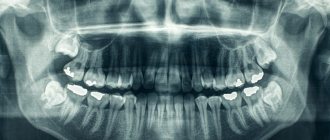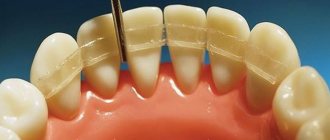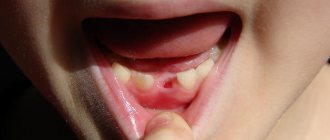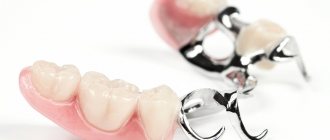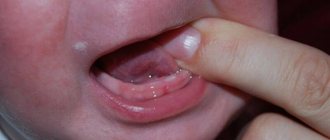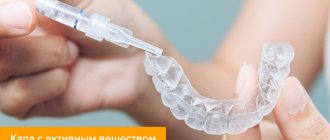Reasons for performing tooth extraction surgery
Indications for an operation that involves removing the incisor from the alveolar socket are divided into two groups:
- emergency;
- planned in advance.
Emergency indications for performing tooth extraction are:
- acute inflammatory processes of a purulent nature (including those spreading to bone tissue);
- severe damage of no functional significance;
- severe acute pain in the absence of opportunities for conservative therapy;
- damage to the dental crown that cannot be repaired by placing a filling or dental prosthetics.
Indications for planned tooth extraction are:
- the formation of basal cysts and the development of periodontitis in the tissues surrounding the incisor with impassable root canals;
- periodontitis, accompanied by severe tooth mobility;
- the presence of supernumerary, impacted or incorrectly located teeth that injure the mucous epithelium of the oral cavity, promote the development of inflammation, provoke pain, impair diction or interfere with food intake;
- tumor growths in jaw tissues;
- the presence of teeth that prevent prosthetics or orthodontic treatment.
Types of anesthesia for tooth extraction in children
Pain during tooth extraction is the main fear for both children and their parents, who, of course, worry about their child and want the tooth extraction procedure for children to be as easy as possible.
Today, effective and safe anesthesia methods are used in pediatric dentistry. The type of pain relief you choose depends on the problem.
If a temporary tooth is to be removed, the root of which has already resolved, the doctor uses topical anesthesia - he applies a special anesthetic gel or aerosol to the gums. But this method is used only for the simplest removal of baby teeth - in cases where the tooth is healthy and does not hurt, it simply does not fall out on time.
Most often in pediatric dentistry, infiltration anesthesia is used, in which an anesthetic drug is injected into the gums on both sides. For injections, special, very thin needles are used - often the small patient does not even feel the injection, since an application of anesthesia is first performed.
General anesthesia for tooth extraction in children is rarely used and only in extreme cases. Indications for general anesthesia include serious mental illness and allergies to local anesthesia drugs.
All anesthetic drugs used for tooth extraction in children are safe and, as a rule, well tolerated by young patients. However, the doctor is obliged to ask the parents before starting the procedure whether the child is allergic to any medications, whether anesthesia has been used before and how it went, and whether the child has any chronic diseases.
Surgical technique
In modern dentistry, two tooth extraction techniques are used:
- simple;
- involving additional surgical procedures.
Simple removal is performed in cases where the coronal or root part of the damaged incisor is perfectly visualized and is well fixed in the forceps.
In such situations, the extraction procedure consists of the following steps:
- collecting anamnesis (the doctor makes sure that the patient has no contraindications to the procedure, carefully examines x-rays);
- anesthesia;
- peeling the gums from the enamel using a special tool;
- fixing the forceps on that part of the incisor that is located above the bone of the alveolar process;
- rocking it, accompanied by destruction of the ligamentous apparatus holding it in the alveolus;
- extraction of the tooth and all mobile fragments of bone tissue from the alveolar socket;
- removal of cysts, granulomas, sanitation of purulent foci in the area of the removed incisor (if indicated);
- treating the hole with antiseptics and anti-inflammatory drugs;
- suturing.
Indications for surgical tooth extraction may include:
- curvature of tooth roots, preventing safe tooth extraction;
- complete destruction of the part of the incisor rising above the alveolar process;
- increased fragility of the dental crown;
- incomplete eruption;
- its presence in the gum in a horizontal position.
Performing operations of this type may be accompanied by incision of the gum tissue, removal of the bone hiding the unerupted incisor using an osteotome or drill, sawing the crown into several parts and taking other measures to facilitate the extraction of problem teeth.
Procedure for removing a permanent tooth
The procedure begins with examining the patient, studying his medical history, assessing the results of the X-ray examination and drawing up a treatment plan. The operation to remove a permanent tooth can be simple or complex.
A simple extraction lasts no more than 10-13 minutes and includes the following steps:
- treating the patient’s oral cavity with an antiseptic drug;
- use of local anesthetics;
- separation of gingival tissues from the dental neck using a special tool (raspator, smoother);
- fixing the forceps on the dental crown;
- dislocation of the problematic tooth using the method of rotation or rocking and carefully removing it from the alveolus;
- medicinal treatment of the formed hole;
- suturing;
- prescribing antibacterial, antihistamine, anti-inflammatory and analgesic drugs to the patient.
In case of complex removal, the surgeon has to take additional measures aimed at providing access to the problem area (cutting the gum, drilling out the bone tissue around the tooth root with a bur, etc.). In this case, the duration of the surgical intervention can increase to several hours.
Post-operative oral care
Improper care of the alveolar socket after removal of a permanent tooth is the most common cause of postoperative complications (severe bleeding, alveolitis, etc.). Therefore, after the procedure is completed, the doctor gives the patient a number of recommendations to prevent the development of pathological processes in the area of surgical intervention.
So, a patient who has undergone surgery is prohibited for 3-5 days from:
- include foods that are too hot, salty or spicy in your diet
- rinse your mouth intensively;
- apply warm lotions and compresses to the cheek on the side of the extracted tooth;
- take hot baths, visit a solarium or sauna;
- brush your teeth (only on the day of surgery);
- play sports, do work involving heavy lifting;
- open your mouth wide;
- actively grimace;
- chew food on the surgical side;
- touch the alveolar socket with your tongue, pick it with a toothpick or other objects;
- smoke;
- drink alcoholic and low-alcohol drinks.
In addition, the patient is instructed to attend all preventive examinations prescribed by the surgeon.
Contraindications for surgery
Reasons for refusing to perform an operation may include:
- decompensated diabetes;
- hypertensive crisis;
- exacerbation of certain mental illnesses;
- blood diseases (leukemia, hemophilia, etc.);
- severe arrhythmia and other heart rhythm disturbances;
- stroke or myocardial infarction suffered within 11-12 months preceding the operation;
- viral diseases of the respiratory system, occurring in an acute form;
- stomatitis, gingivitis and other infectious diseases of the oral cavity.
Almost all of the contraindications listed are relative. If they are detected, the question of the advisability of surgical intervention is resolved on an individual basis, taking into account the prevailing circumstances. If necessary, the operation is performed in a hospital setting (in the maxillofacial surgery departments of hospitals) under the supervision of experienced resuscitators and other specialists.
In what cases should teeth not be removed?
Contraindications to the operation are:
- acute infectious diseases;
- menstruation in women;
- hypertensive crisis, severe arrhythmia and other cardiac disorders;
- I and III trimesters of pregnancy;
- taking medications that reduce blood clotting;
- hemophilia and other blood diseases;
- epileptic seizures;
- schizophrenia and other mental illnesses.
If the listed pathologies and conditions are identified, the issue of tooth extraction is considered on an individual basis.
What to do if there is bleeding after tooth extraction
Normally, bleeding should stop within 15–20 minutes. If the tampon on the hole is saturated with blood, then it needs to be changed. If the bleeding does not stop or intensifies, consult a dental surgeon immediately. If you have any blood diseases or bleeding disorders, you should inform your doctor about this before surgery.
Tooth extraction is a full-fledged operation. Therefore, it is carried out according to indications. After the procedure, the patient must follow all doctor’s instructions. Only in this case the risk of complications is minimal and a quick recovery occurs.
Features of hygienic care after surgery
For patients undergoing surgery to remove one or more teeth, it is recommended:
- stop eating food for 2.5 hours;
- do not chew food on the side of the postoperative wound until it is completely healed;
- temporarily stop consuming too hot drinks and food;
- refrain from brushing for 1.5 days;
- give up active physical labor for 3 days.
If complications develop (the appearance of prolonged bleeding, inflammatory processes, purulent discharge, etc.), you must immediately contact specialists at a dental clinic and undergo a course of therapy according to the regimen they have developed.
Prices for tooth extraction:
| Removal of a tooth or tooth root (depending on complexity) | from 2,000 to 3,950 rubles |
| Removal of a non-impacted (erupted) wisdom tooth (“eight”) | 4,650 rubles |
| Removal of an impacted (non-erupted) or semi-impacted tooth | from 6,500 to 8,500 rubles |
| Curettage of the hole after tooth extraction | 800 rubles |
| Stitching (1 stitch) | 450 rubles |
The stated cost of tooth extraction includes:
- required amount of anesthesia;
- antiseptic treatment of the oral cavity and surgical field;
- tooth extraction (removal) operation
- washing the tooth socket with antiseptic solutions
- socket tamponade
- if necessary, a control x-ray
- removal of sutures at the next visit and the required number of postoperative examinations.
If it is necessary to apply sutures to the edges of the socket and curettage (mechanical cleansing) of the tooth socket, these manipulations are paid separately.
Unfortunately, there are situations when it is impossible to save a tooth, even using all modern treatment technologies. In such cases, the tooth must be removed and then replaced with an artificial tooth.
Indications for removal
The absolute indication for surgery is severe pain and acute purulent inflammation in the surrounding tissues with the risk of damage to the jaw bones.
Relative indications for removal of permanent teeth:
- carious tooth destruction below the gum level, especially with damage to the roots;
- inability to secure an artificial crown, pins, bridge or removable dentures on the remaining roots;
- atrophy of the alveolar margin of the fourth degree;
- supernumerary tooth outside the dentition;
- close location of the tooth to the jaw fracture area;
- with longitudinal fractures of tooth roots;
- with atypical eruption of wisdom teeth, for example, if chronic inflammation occurs, pressure on neighboring teeth with the threat of their displacement;
- for orthodontic purposes to free up space in the dentition.
Preparing for removal
- Examination. The dentist collects information about the patient’s general health, allergies, and chronic diseases, especially if the patient is elderly. Then he does an examination and draws up a general picture of the oral cavity, assesses the condition of the crown of the diseased tooth and its mobility. Using radiography, the size of the tooth roots, the presence of fusion, and the condition of the surrounding tissues are determined. Selects the method of tooth extraction and the instrument.
- Patient preparation. If there is a focus of infection in the surrounding tissues, antibiotics are prescribed on the day or the day before tooth extraction. Restless patients with easily excitable or weak mental health are prescribed sedatives.
- Doctor training. The dental surgeon must perform the operation wearing a mask, safety glasses and gloves. Before putting on sterile gloves, the doctor washes his hands with soap and a brush under running water, dries them, and then treats them with an alcohol solution.
- Preparation of the surgical field. To minimize the risk of tooth socket infection after surgery, the dentist improves the hygienic condition of the oral cavity. To do this, the oral mucosa and surface of the teeth are mechanically cleaned of plaque and food debris. If extraction is carried out as planned, then the supragingival and subgingival surfaces of the teeth are cleaned of tartar.
- Anesthesia. Depending on the place in the row and the condition of the tooth, the doctor selects a drug and method of pain relief. After administering the anesthetic drug, the doctor continuously remains near the patient and monitors his condition. Anesthesia can be local or general. Local anesthesia is divided into injection and non-injection. With general anesthesia (narcosis), an anesthesiologist is additionally involved in the operation.
Semi-retinated tooth
In principle, the method of removing such a tooth is no different from removing a completely impacted tooth. But, as a rule, it is a little easier, because the tooth is not so deep. The main stages are essentially the same: anesthesia, creating access to the tooth (and sometimes you can do without incisions), fragmentation (dividing the tooth into parts) and, in fact, removing the teeth in parts.
After removing the lower semi-impacted tooth, sutures are placed on the socket; in the area of the upper wisdom teeth, sutures are not necessary.
Removal methods
The technique of tooth extraction is carried out in a simple or complex way, depending on the condition of the crown, roots, and anatomical location. If the crown is preserved, then a simple extraction method using forceps is most often sufficient for the procedure.
When the crown is severely damaged or the case is atypical (an incorrectly grown wisdom tooth), dentists resort to surgical removal using an elevator, gouging and sawing tools.
Dentistry does not stand still, and tooth extraction techniques are constantly being improved. Today this operation can be performed using ultrasound. This method has undoubted advantages over traditional ones:
- Ultrasonic exposure is aimed only at hard bone tissue, and therefore does not injure gums, nerves and blood vessels;
- there is no or minimal pain during the intervention;
- Using ultrasound surgery, you can remove a tooth if there are general contraindications, for example, pregnancy or hemophilia (poor blood clotting).
The main disadvantage of this technique is its high price compared to traditional methods.

